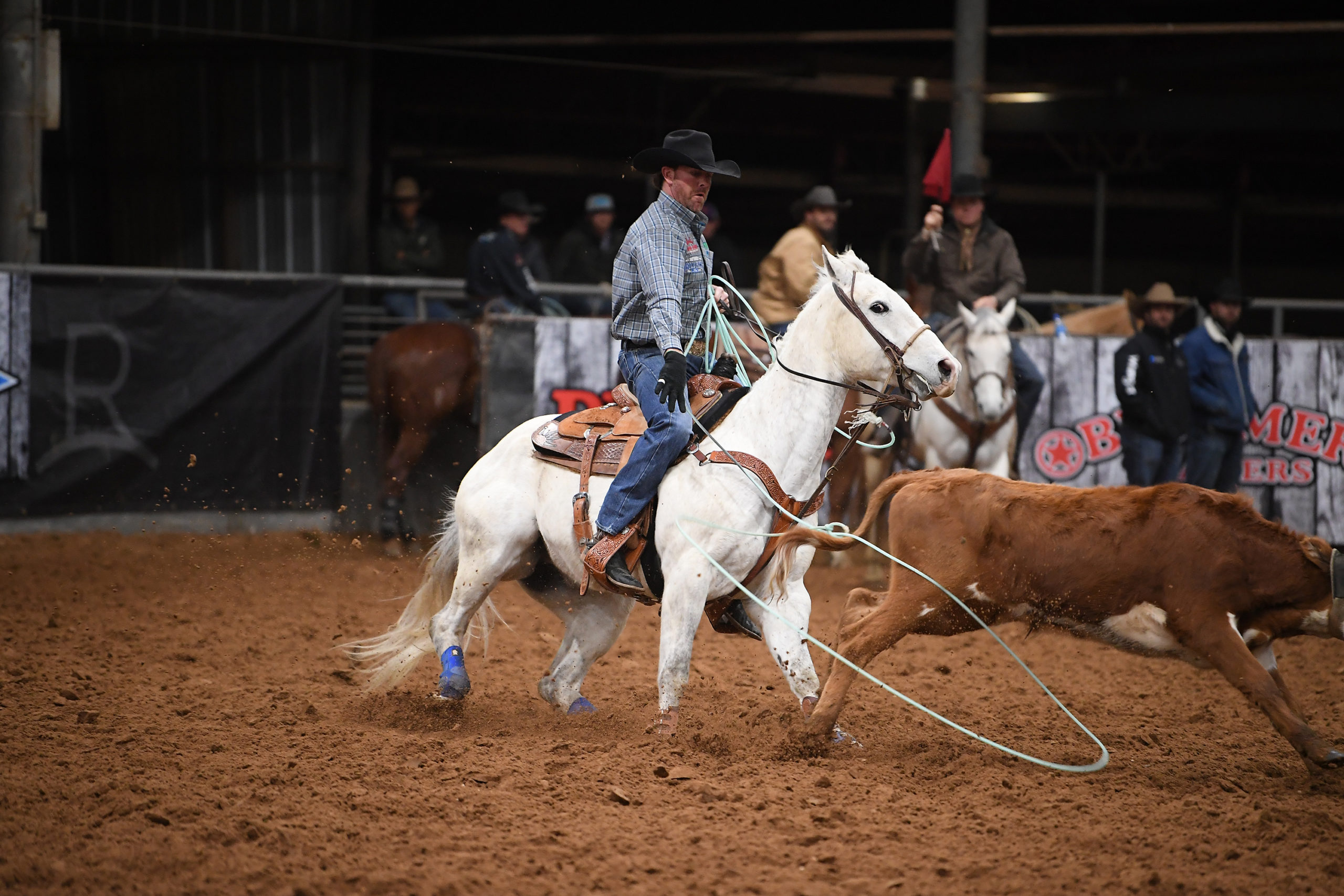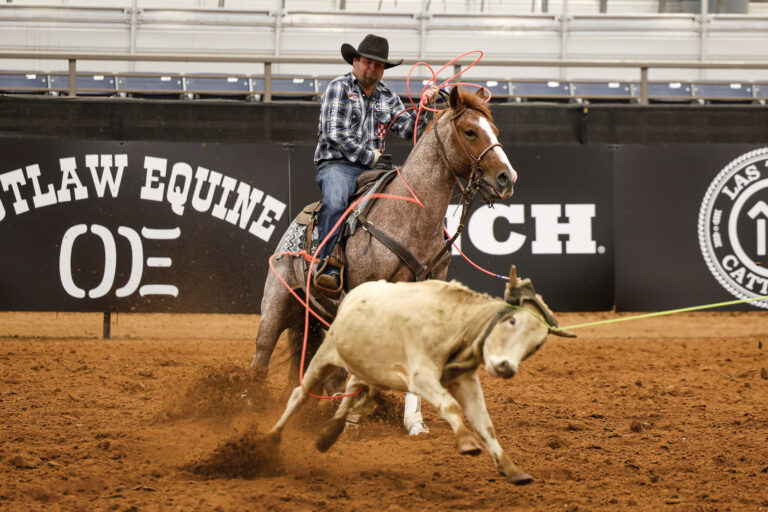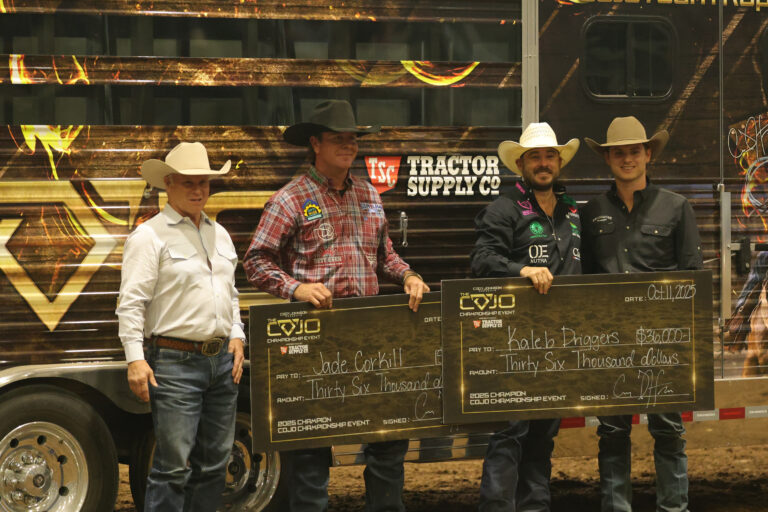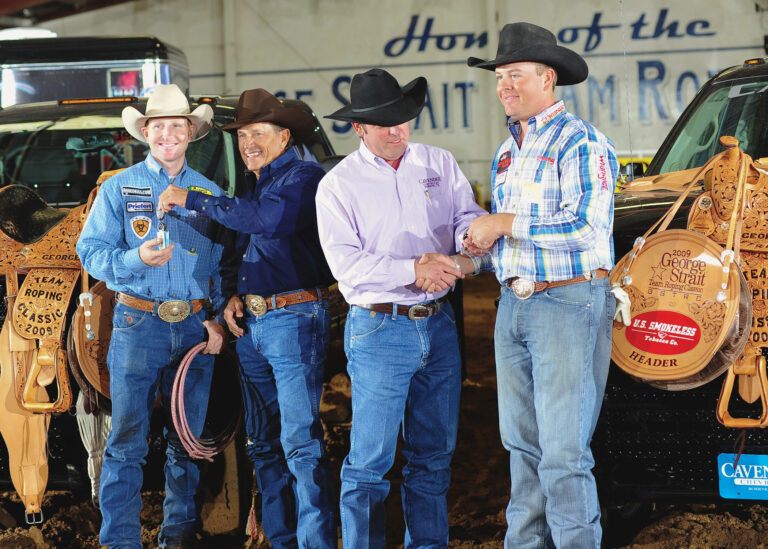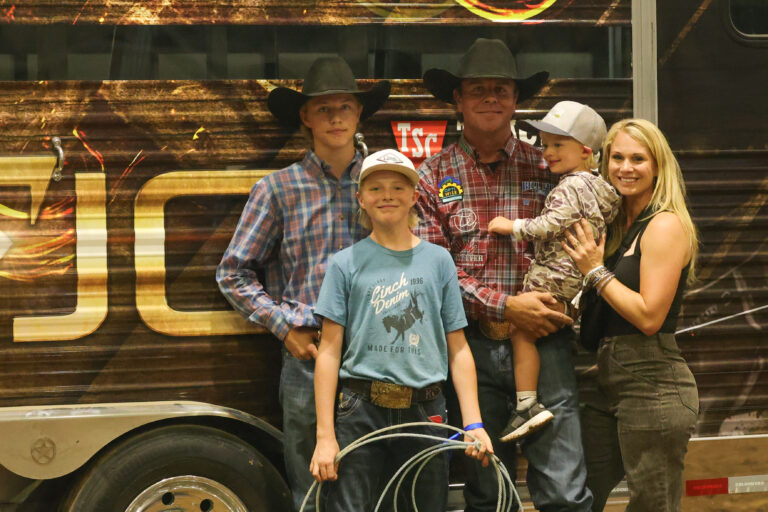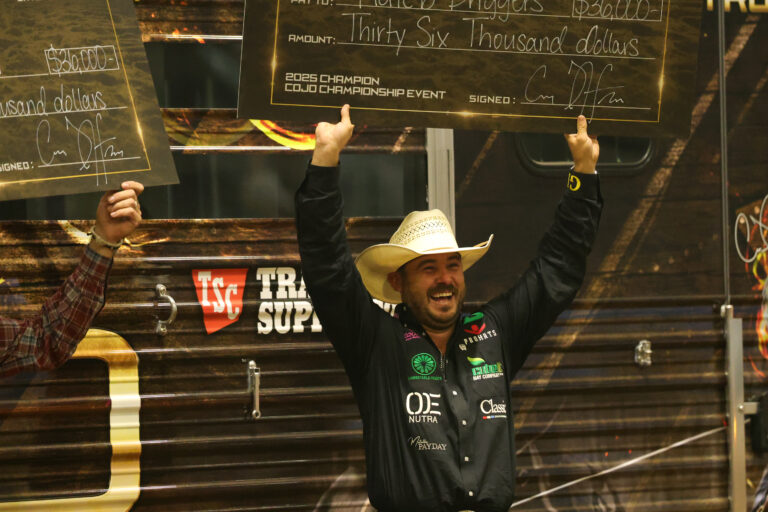This is a series of pictures going back to 2012, and they really show how much the game has changed. Headers are turning steers faster—way faster—without the opportunity to set up the run.
The position heelers are required to ride goes against 34 years of my natural ability and what I’ve worked on. What helped set me apart back in 2012 was that I was one of the guys comfortable riding a wider position and allowing the run to develop, then coming in to take my shot. But today, it’s gotten hard enough to win second that everybody is trying to win first. That means headers are turning steers faster than ever, and as heelers we’ve got to ride to a closer spot and hope nothing bad happens. You could win fourth every time you felt like it in 2012. Now you might win twelfth and rope the best roping of your life, and that’s changed the sport and how we have to approach it.
I’m going to talk through each picture from different times in my career to explain a little better how much has changed.

2012 | San Antonio Stock Show & Rodeo
This picture shows me I had the best horse in the world at the time. Regardless of who owned him, Caveman was fundamentally the best horse there was. He had the ability, no matter what happened—whether there was a wall, a crowd, a heel barrier—to let me get to the same spot on a steer. I could plan to ride to a position to let a steer go straight that was supposed to step left, and that steer could go left anyway, and I could still get there on Caveman. I had a one-track brain because he literally took care of the rest. And you can see that even in this fast setup at San Antonio, where I was 3.3 even in 2012, that I had the chance to ride to a comfortable, wider position before I had to commit and throw. Kaleb Driggers gave the same sort of handles he’s giving Junior Nogueira to win gold buckles, still controlling the steer through the turn.
READ MORE: Tips for Using Your Left Hand When Heeling with Jade Corkill

2012 | Reno Rodeo
This shot shows that as I was getting to my ideal position, Kaleb had the steer roped and was setting him up for me, which gave me another couple clicks to get there. Now in 2022, headers can’t afford to do that. By the time I’m to this spot now, the head rope hits the horns and the header already has the steer turned because he has to. If you happen to get there before all that happens, it’s great, but if you don’t, you never do. Ideally, I’m still trying to get to this same spot to make the corner, but it doesn’t happen nearly as often as it used to. I used to hit that spot, check up and be ready for the header to turn the steer. The hardest part today—if there’s no heel barrier—is I can’t just forget my header and take the start I need. I have to still let the steer leave, but then the header gets there and turns the steer faster than ever because he throws the head rope farther than ever. The head rope snaps on, I come blowing in there, and I’m two-and-a-half horse lengths behind because my header has pulled the steer away as soon as the head rope hits.
READ MORE: Kaleb Driggers’ and Jade Corkill’s Big Joke

2019 | Oakdale Saddle Club Rodeo
I roped with Luke Brown there, and we won the day money on a longer barrier. Huey is so fast, and I was ahead of Luke when he headed the steer. That shot looks like that because I was able to be so far ahead. That was a practice shot. I wish there were 100 Oakdales. I was where I needed to be before the header was. However far the header reaches, I have to throw from that far, too. Now, all of a sudden, I’m so far away from the feet, but he’s legal. You have to have a fast heel horse. I know that for sure, because I have a few not as fast horses, too. You only see me riding Champ and Huey for a reason, even though I do own seven heel horses.

2021 | Lone Star Shootout
This was a run with Clay Tryan. I wasn’t late, but that steer stepped left. That’s a perfectly good spot to be in. But if I’d have gone one more stride, that steer would have gone straight in front of me. Clay and I hit the barrier together, and he was already throwing his rope. I honestly don’t know how you’d create a run in this scenario like we did in that 2012 picture from San Antonio, because Clay had to be turning him because we had guys like Dustin Egusquiza ahead of us in that roping. We had to be fast, so the position I’m in here gave me that shot on my next swing, because that was the only option we had.
Now, the slightest little mistake can really make you look like a fool. You’ve got to ride to a spot to throw as soon as your header gets the steer legal, but that spot can get you in trouble unless everything goes right. In 2012 with Driggers, that stuff could happen and it wasn’t so bad because I could be far enough away from the steer and not get in a bind. I was comfortable doing that. Now, if I give myself enough room to not get in a bind, that is actually putting me in a bind. That’s what’s changed in my roping the most. I’ve had to ride a completely different position. You have to almost be too close and hope it goes your way.
READ MORE: Rebuilding Your Roping with Jade Corkill

2022 | Bob Feist Invitational
Only places like the Bob Feist and Oakdale allow for me to ride the position I’m most comfortable in—wider, farther up the arena—like I could at the start of my career. My left hand is picked up, my left elbow is up. My chest is out, and I’m ready to throw right now. The shot is set up, because that roping gave me time to beat my header. The steer was stepping up to the right, and I was there. I had time to get up there and get around—which makes it most like a 2012 picture.
READ MORE: Epic Team Roping with Patrick Smith, Clay Tryan, Jade Corkill and Kaleb Driggers




